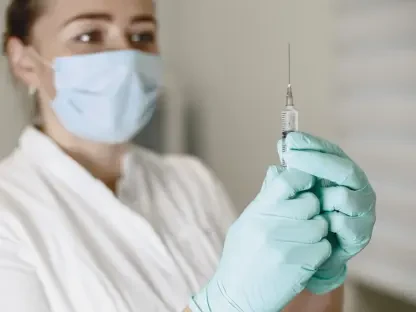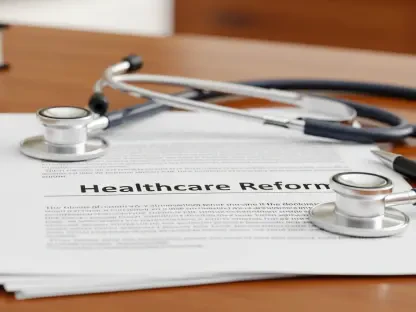In a groundbreaking push to enhance efficiency in the health care sector, the U.S. Department of Health and Human Services (HHS), along with the U.S. Food and Drug Administration (FDA), has embarked on an initiative to significantly curtail regulatory burdens. This initiative is shaped by President Trump’s Executive Order 14192, known as “Unleashing Prosperity Through Deregulation,” which introduces a transformative regulatory policy. The pivotal “10-to-1” rule is at the heart of this initiative, mandating that for every new regulation introduced, ten existing regulations must be abolished. This sweeping change is aimed at streamlining processes, curtailing expenses, and enhancing efficiency within federal agencies responsible for overseeing health care delivery.
Balancing Deregulation and Health Care Innovation
Encouraging Efficiency and Innovation
The health care industry stands at the brink of transformation as regulatory reform takes center stage, particularly with the introduction of the “10-to-1” rule. This rule represents a bold approach to reducing unnecessary bureaucratic hurdles that often impede the delivery of health care services. By repealing outdated regulations, the initiative is poised to alleviate financial burdens and foster a more conducive environment for innovation. This, in turn, could lower operational costs and enhance patient care without compromising safety or quality, a crucial balancing act. This movement aligns with a broader governmental effort to reduce administrative overload in sectors like Medicare, under the watchful eye of the Office of Management and Budget (OMB).
HHS Secretary Robert F. Kennedy, Jr. underscores the significance of this initiative, highlighting its potential to revolutionize how health care providers operate. By dismantling regulatory barriers, there is an opportunity to foster a more adaptive and responsive health care system. This shift aims to empower clinicians, allowing them more autonomy and ultimately improving patient outcomes. Emphasizing patient safety alongside innovation, this deregulatory stance seeks not just short-term relief but lasting transformation in health care delivery.
Public Input and Transparency
In a bid to ensure inclusivity and transparency, the initiative has made provisions for public participation. Through the release of a Request for Information (RFI), stakeholders are encouraged to contribute their perspectives on regulations that require reform. This open channel for feedback not only enhances transparency but also democratizes the policy-making process, ensuring that diverse opinions are considered in shaping future regulations.
Furthermore, detailed reports on regulatory cost savings will be published annually, offering the public insights into the impact and progress of the initiative. FDA Commissioner Marty Makary has articulated the potential benefits of the initiative, pointing out that reducing regulatory burdens could allow clinicians to dedicate more time to patient care. By allowing health care professionals to focus less on paperwork and more on medical practice, the objective is to enhance both the quality and efficiency of patient care. This transparent approach ensures accountability and builds trust in the regulatory framework’s reformation process.
Implications and Future Considerations
Weighing Benefits Against Risks
As with any regulatory overhaul, the deregulation initiative is under close scrutiny. While proponents argue that it enables health professionals by removing cumbersome barriers, critics remain vigilant, particularly regarding the potential risks to safety standards. The initiative intends to foster a dynamic regulatory environment that supports economic growth and improves health care outcomes; however, its implications for vulnerable populations reliant on existing safeguards merit careful consideration.
The potential impact on these groups underscores the critical need for balancing innovation with the protection of those who may be adversely affected by changes in regulations. Ensuring that reforms do not inadvertently compromise essential safeguards is crucial. Implementing measures to monitor and assess the initiative’s effects on vulnerable populations is a necessary step in addressing these concerns and refining the approach as needed.
Charting a New Regulatory Path
In an effort to boost efficiency in the health care sector, the U.S. Department of Health and Human Services (HHS), together with the U.S. Food and Drug Administration (FDA), has launched an initiative focused on reducing regulatory burdens. This effort is guided by President Trump’s Executive Order 14192, titled “Unleashing Prosperity Through Deregulation,” which promotes a progressive regulatory approach. A key component, the “10-to-1” rule, requires that for every new regulation enacted, ten existing ones must be removed. This far-reaching change seeks to simplify processes, cut expenses, and improve efficiency in federal agencies supervising health care services. The goal is to alleviate administrative pressures and facilitate smoother operations, ultimately leading to more effective health care delivery. By eliminating excessive regulations, both HHS and FDA aim to foster an environment that supports innovation while maintaining essential safeguards for public health.









